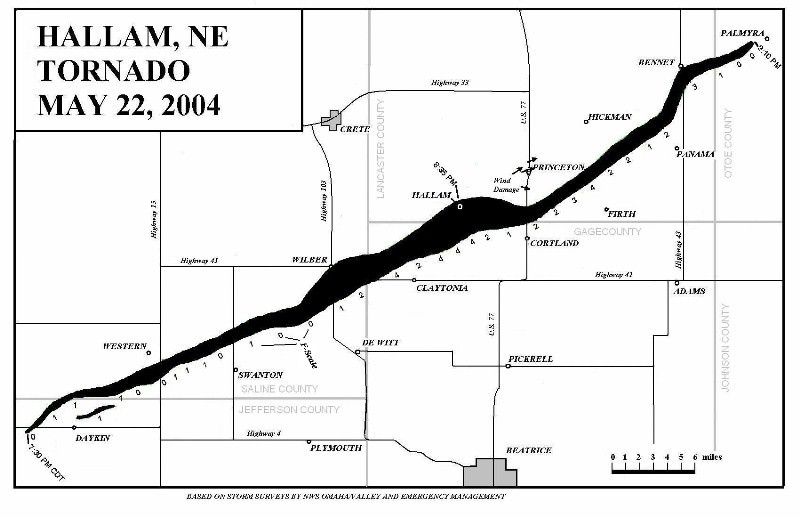Also known as a twister, a tornado is a rotating column of air that can cause a tremendous amount of damage on the ground. Tornadoes can very in size from harmless dust devils to devastating twisters with wind speeds greater than 450 km/h.
A tornado looks like a swirling funnel of cloud that stretches from bottom of the clouds down to the ground. Depending on the power of the tornado, there might be a swirling cloud of debris down at the ground, where it’s tearing stuff up. Some tornadoes can look like thin white ropes that stretch from the sky down to the ground, and only destroy a thin patch of ground. Others can be very wide, as much as 4 km across, and leave a trail of destruction for hundreds of kilometers.
Tornadoes appear out of special thunderstorms known as supercells. They contain a region of organized rotation in the atmosphere a few kilometers across. Rainfall within the storm can drag down an area of this rotating atmosphere, to bring it closer to the ground. As it approaches the ground, conservation of momentum causes the wind speed to increase until it’s rotating quickly – this is when tornadoes cause the most damage. After a while the tornado’s source of warm air is choked off, and it dissipates.
When a tornado forms over water, it’s called a waterspout. These can be quite common in the Florida Keys and the northern Adriatic Sea. Most are harmless, like dust devils, but powerful waterspouts can be driven by thunderstorms and be quite dangerous.
Scientists have several scales for measuring the strength and speed of tornadoes. The most well known is the Fujita scale, which ranks tornadoes by the amount of damage they do. A F0 tornado damages trees, but that’s about it, while the most powerful F5 tornado can tear buildings off their foundations. Another scale is known as the TORRO scale, which ranges from T0 to T11. In the United States, 80% of tornadoes are F0, and only 1% are the more violent F4 or F5 twisters.
Although they can form anywhere in the world, tornadoes are mostly found in North America, in a region called Tornado Alley. The United States has the most tornadoes of any country in the world; 4 times as many as the entire continent of Europe. The country gets about 1,200 tornadoes a year.
We have written many articles about the tornado for Universe Today. Here’s an article about the biggest tornado, and here’s an article about how tornadoes are formed.
If you’d like more info on tornadoes, check out the National Oceanic & Atmospheric Administration (NOAA) Homepage. And here’s a link to NASA’s Earth Observatory.
We’ve also recorded an episode of Astronomy Cast all about planet Earth. Listen here, Episode 51: Earth.


